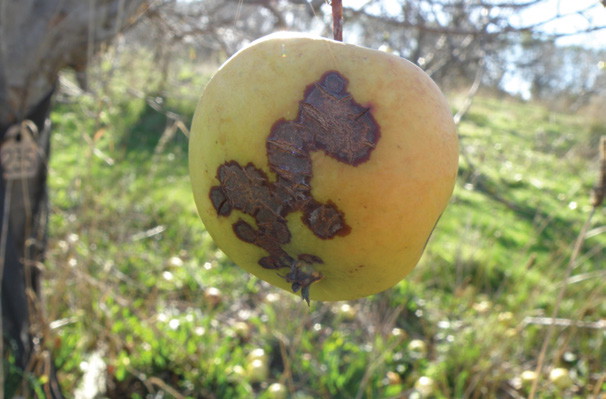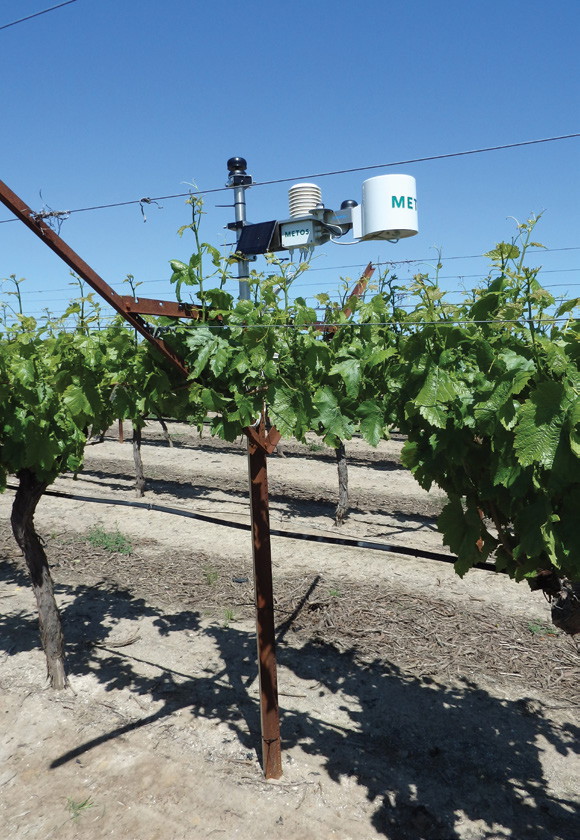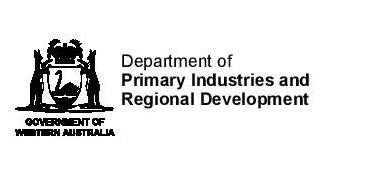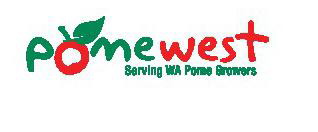Disease
modelling
for fruit trees
BY SUSIE MURPHY WHITE1
AND ANDREW TAYLOR 2
1 POMEWEST PLANT PATHOLOGIST,
2 PROJECT MANAGER, DPIRD
Decision support systems (DSS) are one of the tools available to assist in the management of the diseases in the orchard.
Recently, the Donnybrook Orchard Improvement Group and the Perth Hills Orchard Improvement Group met to discuss the benefits of using the Decision Support System RIMpro to improve the management of black spot (apple scab), powdery mildew in apples, pear scab and brown rot for stone fruit.
Guest speakers at the workshops were Marcel Veens Horticultural Consultant and RIMpro agent for Australia and Andrew Taylor DPIRD Plant pathologist.
Andrew explained the lifecycle of the diseases affecting orchards in WA and quoted David Ritchie from North Carolina State University: “Worldwide, brown rot is the most important disease risk for stone fruits in warm, humid climates. It is the primary disease for which fungicides are applied to stone fruits.”
The number one disease of economic importance to WA agriculture is powdery mildew, with the horticultural production regions experiencing optimal climatic conditions for powdery mildew outbreaks. While WA was able to keep Black Spot out the pome industry for many years, it is now present in the WA pome growing regions and needs constant management by growers to keep the disease to a minimum.
Winter action is critically important for the control of all diseases. Actions in winter can break the disease cycle and slow the potential spread during the growing season. The orchard clean-up of sweeping and mulching leaves and fruit can stop disease reproduction and maturing of spores over winter.
RIMpro Cloud Service is an interactive DSS for pest and disease management in fruit and wine grape production (see Figure 1).
Marcel explained how RIMpro was developed and tested by scientists in production regions around the world, initially designed for organic growers. But driven by the need for European growers to reduce the number of pesticide applications, a reduction in the number of active ingredients available to growers and the emergence of resistance, RIMpro has seen an uptake in subscriptions worldwide.
To run the DSS, growers will need to have a weather station set up in the orchard that is monitoring; temperature, relative humidity, rainfall, wind speed/ direction, solar radiation and two leaf wetness sensors, one inside and one outside the canopy. Then RIMpro’s models use the localised weather forecasts to simulate disease development in the coming hours and days. This assists in decisions over management of diseases, for instance, whether the risk is high enough to warrant a fungicide application or whether it can be postponed for a future time.
Using a DSS has the potential to save growers money and time by only spraying when it is required and not when it’s not needed. Overseas data has shown a reduction in the number of sprays applied in orchards using DSS systems, in comparison to those that are not, with the same level of disease control achieved.
Using a DSS has the save growers potential to money and time.

FIGURE 1. RIMPRO BLACK SPOT PRIMARY INFECTION FORECAST.

1: Apricot Powdery mildew (Podosphaera fusca).

2: Pear Scab (Venturia pirina).

3: Black Spot or apple scab (Venturia inaequalis).

4: Weather Station with leaf wetness sensors in table grapes.
Actions in winter can break the disease cycle and slow the potential spread.
When using the Black Spot model in RIMpro, the model starts the simulations once the green tip date is entered into the program, then simulations begin using the actual leaf wetness, humidity, temperature, and rainfall data from your weather station in the orchard, predicting the spore ejection and germination with the weather forecast predicting the infection period. These predictions continue throughout the day and are updated every 30 minutes.
The DSS can also provide a spray plan providing fungicide efficacy and providing rotations to prevent resistance.
The disease modelling project have another series of workshops in November looking at the disease conditions and management during spring. We’ll also be visiting some weather station sites to investigate the importance of real time weather forecasting.




New Black Spot project for Pome
DPIRD are developing a project within The Cooperative Research Centre for Solving Antimicrobial Resistance in Agribusiness, Food, and Environments (CRC SAAFE), investigating the management of Black Spot in WA orchards to avoid fungicide resistance. Whilst currently in the planning phase, a component of the project is aimed at spore trapping in WA orchards to validate the disease models available through various DSS.
This will give growers assurance that the DSS models fit the real-world situation within WA fruit orchards.
Once further details of the project are developed and finalised, information will be presented to industry.
MORE INFORMATION
Susie Murphy White or Andrew Taylor DPIRD Bunbury Andrew.Taylor@dpird.wa.gov.au
The disease modelling project acknowledges the funding from the Donnybrook Orchard Improvement Group, Pomewest and Stonefruit WA.